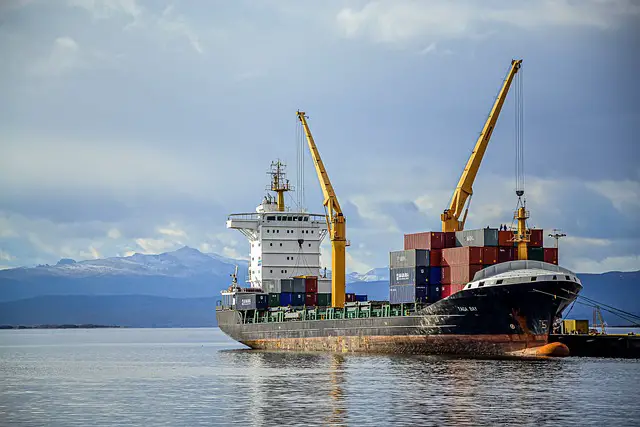Embracing Urgency on the Imperative for Global Climate Action, and Solutions

In the face of escalating climate crises, the call for urgent action reverberates louder than ever. Climate change, driven predominantly by human activities, poses an existential threat to life on Earth as we know it. Rising temperatures, extreme weather events, melting ice caps, and biodiversity loss are not distant future scenarios; they are the stark realities of today. To mitigate the impending catastrophe and secure a sustainable future for generations to come, concerted global efforts toward climate action are indispensable.


Page Contents
Embracing Urgency on the Imperative for Global Climate Action
Understanding the Urgency
The urgency of climate action is underscored by the overwhelming scientific consensus. The Intergovernmental Panel on Climate Change (IPCC) warns that without substantial and rapid reductions in greenhouse gas emissions, the world will surpass critical temperature thresholds, leading to irreversible and catastrophic consequences. Each passing year of inaction diminishes our ability to limit global warming to manageable levels, exacerbating the severity of impacts and the costs of adaptation.


The Impact of Climate Change
Climate change manifests in multifaceted ways, affecting ecosystems, economies, and communities worldwide. From the loss of vital habitats and species extinction to the displacement of populations due to sea-level rise and intensified natural disasters, the ramifications are far-reaching and indiscriminate. Developing countries, in particular, bear the brunt of climate change despite contributing minimally to its causes, highlighting the inherent inequities in its impacts.


Transitioning to a Low-Carbon Future
Central to climate action is the imperative to transition swiftly from fossil fuel dependency to renewable energy sources. The rapid expansion of renewable energy infrastructure, coupled with advancements in energy efficiency and conservation, offers a pathway to decarbonize economies and reduce emissions substantially. Embracing innovation and harnessing the potential of emerging technologies, such as carbon capture and storage, further enhances our capacity to mitigate climate change.

The Role of Policy and Governance
Effective climate action necessitates robust policy frameworks and international cooperation. The Paris Agreement, adopted in 2015, stands as a landmark accord uniting nations in a collective commitment to limit global warming to well below 2 degrees Celsius above pre-industrial levels. However, translating pledges into tangible actions requires political will, accountability mechanisms, and transparent monitoring systems. Policymakers must prioritize climate considerations across sectors, integrating climate resilience into development planning and fostering sustainable practices.
Mobilizing Society and Industry
Climate action is not solely the responsibility of governments; it demands broad-based participation from civil society, businesses, and individuals. Grassroots movements, advocacy campaigns, and youth-led initiatives amplify the urgency of climate action and hold decision-makers accountable. Likewise, businesses play a pivotal role in driving the transition to a low-carbon economy through sustainable practices, innovation, and investment in clean technologies. Engaging stakeholders across sectors fosters synergies and catalyzes transformative change.
Investing in Adaptation and Resilience
While mitigation efforts are crucial, adaptation measures are equally essential to confront the existing and anticipated impacts of climate change. Investing in resilient infrastructure, disaster preparedness, and ecosystem restoration enhances our capacity to withstand climate-related shocks and safeguard vulnerable communities. Furthermore, prioritizing equity and social justice in adaptation strategies ensures that marginalized groups are not disproportionately burdened by climate impacts.
Here are some of the top causes of climate change:
- Greenhouse Gas Emissions: The primary driver of climate change is the emission of greenhouse gases (GHGs) into the atmosphere. These gases, including carbon dioxide (CO2), methane (CH4), and nitrous oxide (N2O), trap heat from the sun and warm the Earth’s surface, leading to global warming. Human activities such as burning fossil fuels for energy, industrial processes like factories, deforestation, and agriculture contribute to the accumulation of greenhouse gases in the atmosphere.
- Burning Fossil Fuels: The combustion of fossil fuels such as coal, oil, and natural gas for energy production is a major source of carbon dioxide emissions. Power plants, vehicles, and industrial facilities release large amounts of CO2 into the atmosphere, contributing to the greenhouse effect and global warming.
- Deforestation: The clearing of forests, agriculture, logging for urban development and house subdivisions and realty not only reduces the Earth’s capacity to absorb carbon dioxide through photosynthesis but also releases stored carbon into the atmosphere. Deforestation accounts for an extreme significant portion of global carbon emissions and contributes to biodiversity loss and habitat destruction.
- Industrial Processes: Certain industrial processes, such as cement production, all kinds of chemical manufacturing, and metal smelting, emit greenhouse gases as byproducts. These industrial activities release CO2, methane, and other pollutants into the atmosphere, ultimately exacerbating climate change more.
- Agricultural Practices: Agriculture is a major contributor to climate change through practices such as livestock farming, rice cultivation, and fertilizer use that comes with chemicals. Livestock, particularly cattle, produce methane during digestion, while rice paddies emit methane during decomposition. Additionally, the use of synthetic fertilizers (chemicals) releases nitrous oxide, another potent greenhouse gas.
- Land Use Changes: Alterations in land use, such as mining, urbanization, agriculture expansion, and infrastructure development, can impact local and regional climate patterns. Changes in land cover affect the Earth’s albedo (reflectivity) and surface temperatures, leading to changes in energy balance, landslides, shaking of lands, and atmospheric circulation.
- Waste Management: Improper waste management practices, including landfilling, global massive burning of waste and open burning of waste, release methane and other greenhouse gases into the atmosphere. Methane is a particularly potent greenhouse gas, with a much higher heat-trapping potential than CO2 over a 20-year period.
Addressing these underlying causes of climate change requires concerted efforts to reduce emissions, transition to renewable energy sources, conserve forests and ecosystems, improve agricultural practices, and promote sustainable development strategies.
Here’s a list of 10msolutions for addressing climate change:
- Transition to Renewable Energy: Accelerate the shift from fossil fuels to renewable energy sources such as solar, wind, and hydroelectric power. Invest in research and development to improve renewable energy technologies and make them more accessible and affordable.
- Energy Efficiency: Improve energy efficiency in buildings, transportation, and industry through measures such as better insulation, energy-efficient appliances, and fuel-efficient vehicles. This reduces energy consumption and lowers greenhouse gas emissions.
- Carbon Pricing: Implement carbon pricing mechanisms such as carbon taxes or cap-and-trade systems to incentivize businesses and individuals to reduce their carbon footprint. This provides a financial incentive to invest in cleaner technologies and practices.
- Reforestation and Afforestation: Protect and restore forests, as they act as carbon sinks, absorbing carbon dioxide from the atmosphere. Promote a global reforestation efforts and sustainable forest management practices to enhance carbon sequestration and preserve biodiversity.
- Sustainable Agriculture: Adopt sustainable agricultural practices that reduce emissions from deforestation, livestock, and fertilizer use. This includes practices such as agroforestry, crop rotation, and organic farming methods.
- Climate-Friendly Transportation: Encourage the use of public transportation, cycling, and walking, and promote the adoption of electric vehicles. Invest in clean and efficient public transit systems and develop infrastructure for charging stations.
- Climate Resilience: Build resilience to climate change impacts by investing in infrastructure that can withstand extreme weather events, such as flood defenses, stormwater management systems, and resilient urban planning.
- Circular Economy: Transition to a circular economy model that promotes resource efficiency, waste reduction, and recycling. Design products for longevity and recyclability, and minimize the use of virgin materials.
- Climate Education and Awareness: Increase public awareness and understanding of climate change through education and outreach programs. Empower individuals and communities to take action through behavior change, advocacy, and collective action.
- International Cooperation: Foster global cooperation and partnerships to address climate change collectively. Honor international agreements such as the Paris Agreement and work together to set ambitious emissions reduction targets and support vulnerable countries in adapting to climate change impacts.
By implementing these solutions and taking concerted action at all levels of society, we can mitigate the impacts of climate change and transition to a sustainable and resilient future.
Conclusion
The window of opportunity to avert the worst consequences of climate change is rapidly narrowing. Bold, decisive action is imperative to steer humanity toward a sustainable and resilient future. Embracing the urgency of climate action requires unwavering commitment, collaboration, and innovation across all sectors of society. As stewards of the planet, we must heed the call to action, for the decisions we make today will determine the fate of generations to come. In the face of adversity, let us stand united in pursuit of a thriving, equitable, and climate-resilient world.







